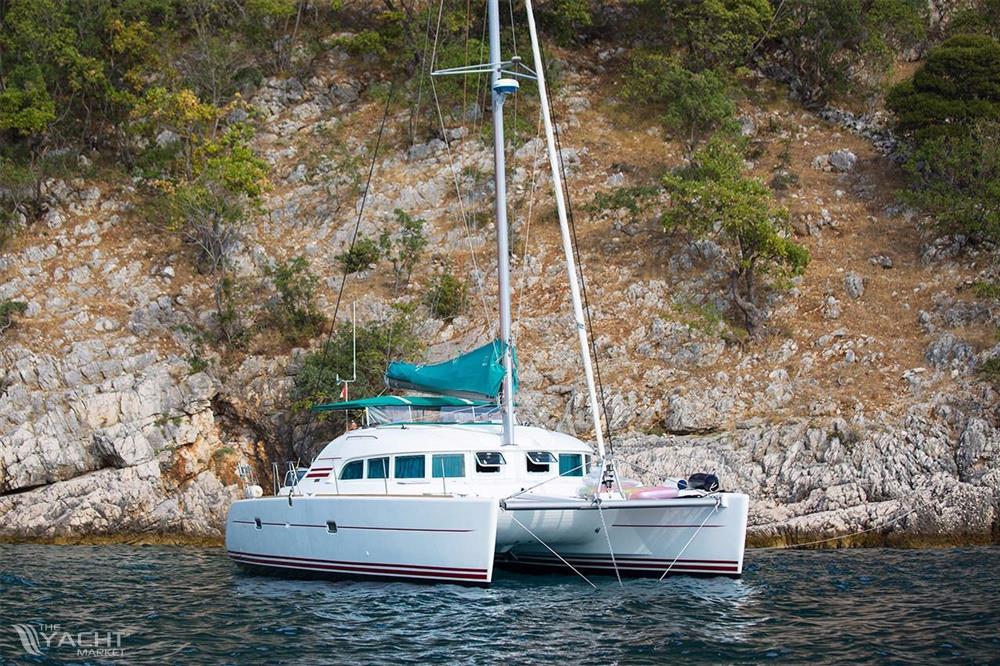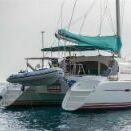On some boats they are simply there to assist sinking on the Thames -
Summary :
A bit more detail :
Here it is probably apposite to quote the case of the narrow boat MINI MOO ex MARY MINT. The following is quoted verbatim from a Safety Bulletin issued by the Port of London Authority: –
On the 24th August 2012, a narrow boat was delivered by road to South Dock Marina in London for a new owner. The vessel was lifted into the dock and the new owner requested to lock out of the marina as they had an overnight berth in Lime House Marina; a short distance up the River Thames. The vessel departed the lock at 17:00 with 5 adults and 1 dog aboard. As they departed the lock the lock keeper commented to them that they should have lifejackets on board as they appeared to be missing. The crew decided to continue on and left the lock with 3 adults in the aft cockpit and 2 adults in the cabin. The vessel transited directly across the river to the starboard side of the channel and then turned upriver towards Lime House Marina. Shortly into their transit the crew noted a change in the engine note and opened the engine room hatch to find the engine half submerged. All persons quickly moved to the stern to try and bail out the engine room, but were unable to cope with the ingress of water into the vessel. The engine room continued to fill with water and flooded into the main cabin, submerging the aft coaming below the water, resulting in severe flooding of the vessel which sank within 10 seconds. All of the crew and the dog entered the water without lifejackets, but were rescued by a nearby RIB and Police Launch.
Marine surveyors and others concerned with narrowboats should obtain a copy of the Bulletin from the PLA and take note of its recommendations.
It was noted by the PLA that the vessel had been the subject of extensive overplating. Whoever had recommended the overplating had also recommended partly blocking off the engine room air jalousie on the port side as its bottom edge was considered even then to be too near the waterline. The following Figure 1 below shows the effect of the overplating and the number of persons seated aft.
The buyer of the MINI MOO bought the boat on the strength of a survey report provided by the seller. The marine surveyor concerned had estimated the height of the engine air intake jalousie from water level marks on the hull although the vessel had been out of the water for a considerable time prior to his survey. He had estimated the intake to be 200 mm above the waterline but when it measured after the salvage it was only 65 mm. The marine surveyor had covered himself with the caveat that it was an estimate only. In that particular case, when the vessel sank, no life jackets were on board and at least one person on board could not swim. The survivors were very lucky that nearby boats managed to pluck them from the water immediately. The fact that a marine surveyor’s report perhaps covers him with words such as estimated does not provide much comfort if bodies have to be pulled from the water.
Figure 1: Detail of Engine Jalousie on MINI MOO
Figure 1 Detail of Engine Jalousie on MINI MOO
The yellow line indicates the original free board in still water this was meassured to be 65 mm. The red line indicates the waterline incurred from three people standing on the aft deck which pushed the engines jalouise below the water.
The vessel was fitted with an air cooled Lister engine and, in accordance with common practice, had a ventilation jalousies cut into the topside aft to give the necessary combustion air supply for the engine. The overplating was such that the jalousie at the engine room was within 65 millimetres of the waterline. That highly dangerous situation was not helped by the presence of a small lop on the water surface. Some five people plus a dog called Gus were on board (three of them sitting aft and two in the cabin) to make the journey and, hearing unusual noises from the engine, the engine room cover was lifted and the boat was found to be rapidly taking water. The situation was made worse by all of the people on board moving aft to have a look and to try to bale the water out, thereby increasing the trim and pushing the lower edge of the jalousie 50 mm under the water. The boat rapidly filled and sank within 10 seconds but, fortunately, a nearby RIB and a police boat arrived within two minutes and all personnel, plus Gus the dog, were picked up by the police and the nearby RIB. Despite the fact that none of them were wearing life jackets and at least one of them could not swim, there were, thankfully, no fatalities although all were suffering from shock. What Gus said was not recorded. It was later said that the owner had relied on a marine survey report prepared for the previous owner and that the vessel was uninsured.






